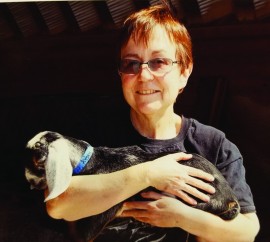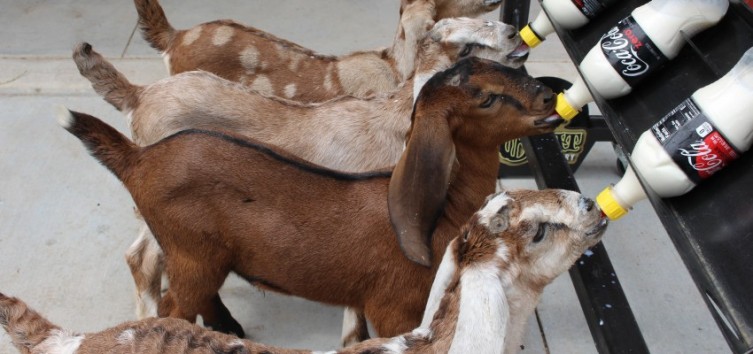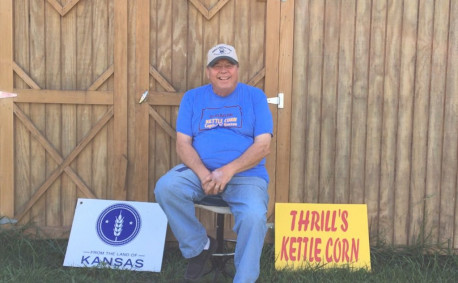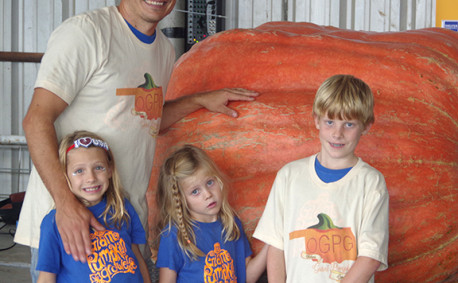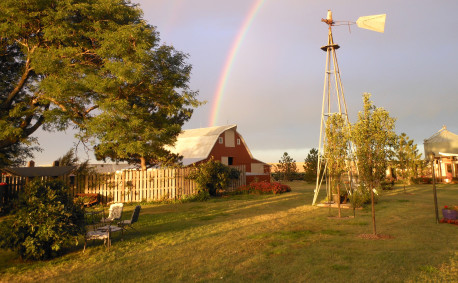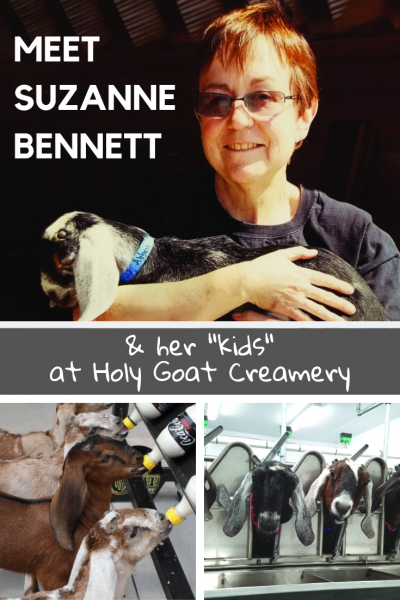Meet a Local Goat Cheese Maker in Kansas
For 30 years, Suzanne Bennett worked as an OB/GYN delivering children. She always had an interest in making her own cheese. After retiring, she attended a cheesemaking workshop and loved it. She decided to take the plunge and make goat cheese at home. That’s when her pet project took on a new life.
“I discovered quickly that finding clean, reliable goat's milk was a big challenge,” Suzanne says. “I also found buying the milk was expensive. That’s when I decided to raise my own goats and produce my own milk.”
Suzanne visited four different goat dairies in four different states before designing and building her own Grade A dairy facility — Holy Goat Creamery — in Manhattan in 2014. Construction was completed in mid-2016, and the first kidding (birthing) occurred in February 2017.
So, she’s still delivering “kids” — only today her kids have four legs instead of two.
About Her Goats
Suzanne breeds and raises purebred Nubian goats. Some of the breed’s distinguishing characteristics include large, pendulous ears and a Roman nose. Nubian goats lead the way in butterfat production among dairy goats: they produce, on average, 4.6 percent or more butterfat content.
While the business started strictly to produce milk, it’s become much more than that.
“The animals make it all worthwhile,” Suzanne says.
She’s spent countless hours learning to perfect her husbandry skills, how to ensure the health and safety of the animals, as well as how to maintain the quality of the milk and cheese products.
“In many respects, my medical experience has been invaluable,” Suzanne says. “The genetics, breeding, labor and delivery and lactation phases of goat management are not much different from my previous practice.”
The goats receive kid-glove treatment on Suzanne’s farm. They live in a state-of-the-art facility that’s cool in the summer and warm in the winter.
How Her Operation Works
Her menagerie consists of seven milking does, 11 yearlings, 14 kids and six adult bucks. The “girls,” as Suzanne calls her does, are milked six at a time, twice each day in a milking parlor. The goats each produce approximately a gallon of milk per day.
As a reward for milking, the does receive a gingersnap when they’re done.
“One of my girls doesn’t like gingersnaps so I feed her a vanilla wafer instead,” Suzanne says.
The milk flows directly from the milking parlor to the bulk tank. Once in the bulk tank, the milk is chilled to 35 degrees and held at this temperature until it’s used within 72 hours (in keeping with the Kansas Department of Agriculture’s regulations). Milk moves from the bulk tank to a vat pasteurizer in the cheese room.
Pasteurization begins by raising the temperature of the milk to 145 degrees and holding it there for 30 minutes. It is then rapidly cooled to the temperature required for the type of cheese made that day.
Depending on the type of cheese being made, the curd is either scooped out or cut to remove the whey. Further whey can be removed by hanging or draining the curd in colanders lined with butter muslin or cheese cloth. Herbs are added later in soft cheeses.
Holy Goat Cheeses
“There’s nothing better than good cheese,” Suzanne says. “It’s packed with protein, butterfat and flavor. Our goal is to establish our niche in the artisan cheese market.”
Holy Goat produces two cheeses: chèvre and feta. Chèvre, meaning “goat’s cheese” in French, features a creamy texture and an earthy, tangy flavor that pairs perfectly with virtually any meal or snack. Feta — arguably one of the most famous Greek cheeses — is a pickled curd cheese featuring a tangy, salty flavor. Holy Goat feta tastes best when served as a table cheese, atop a salad or pizza, or paired with olives, nuts and a glass of wine.
“Our two cheeses provide so much versatility,” Suzanne says. “They can be used for dips, mixed with scrambled eggs or made into cheesecake. On Valentine’s Day, we make chocolate cheese truffles that are to die for.”
Making all their cheeses in small batches ensures the highest flavor profile and textures.
While people rave about the feta and Chèvre cheeses from Holy Goat Creamery, Suzanne likes to tell the story of a six-year-old who toured the farm recently. After sampling the cheeses told her, “I really like the crackers.”
To learn more about Holy Goat Creamery, including where you can purchase Suzanne’s products, visit her website.
This article originally appeared in Kansas Living magazine and has been edited for our website. Read the full, original article by John Schlageck.


